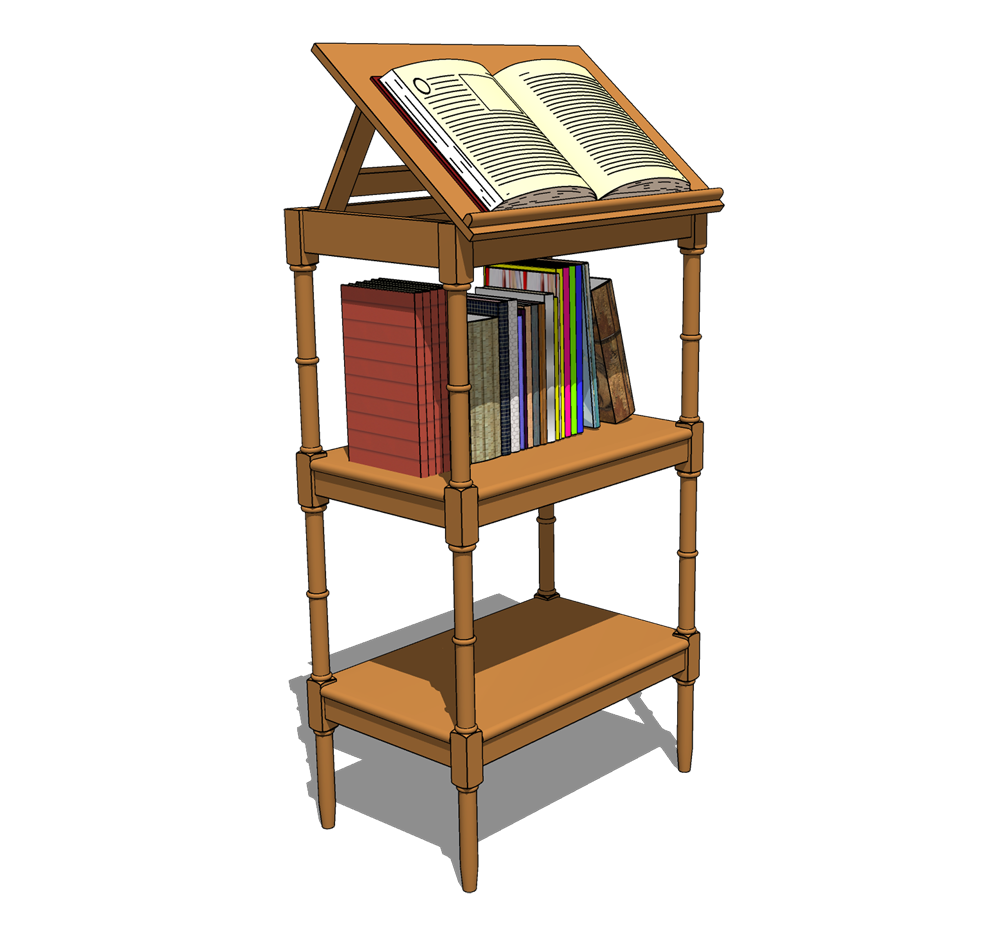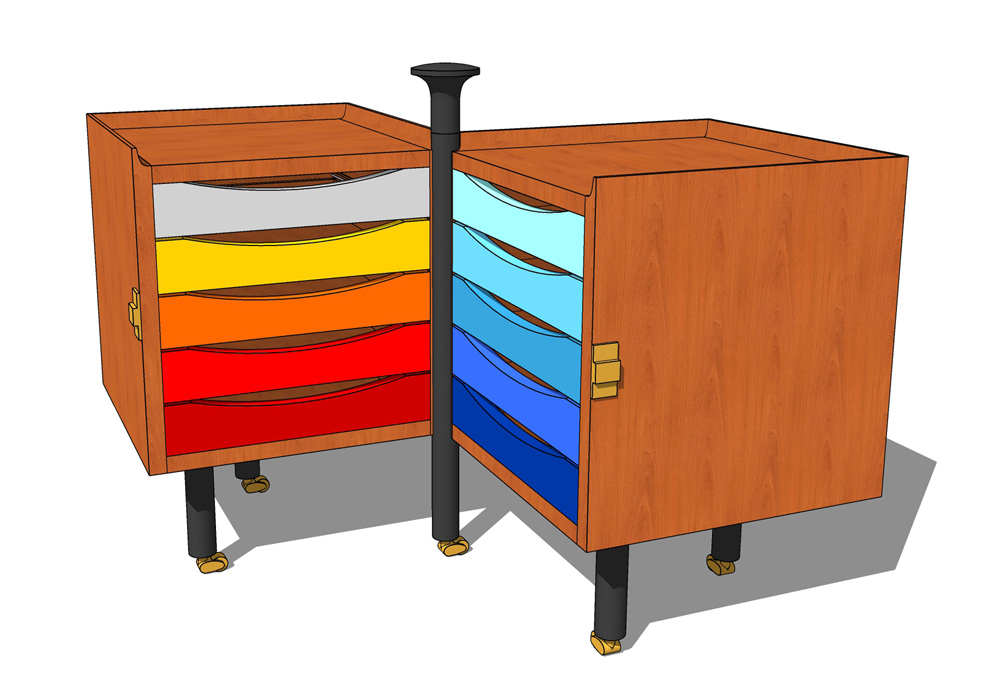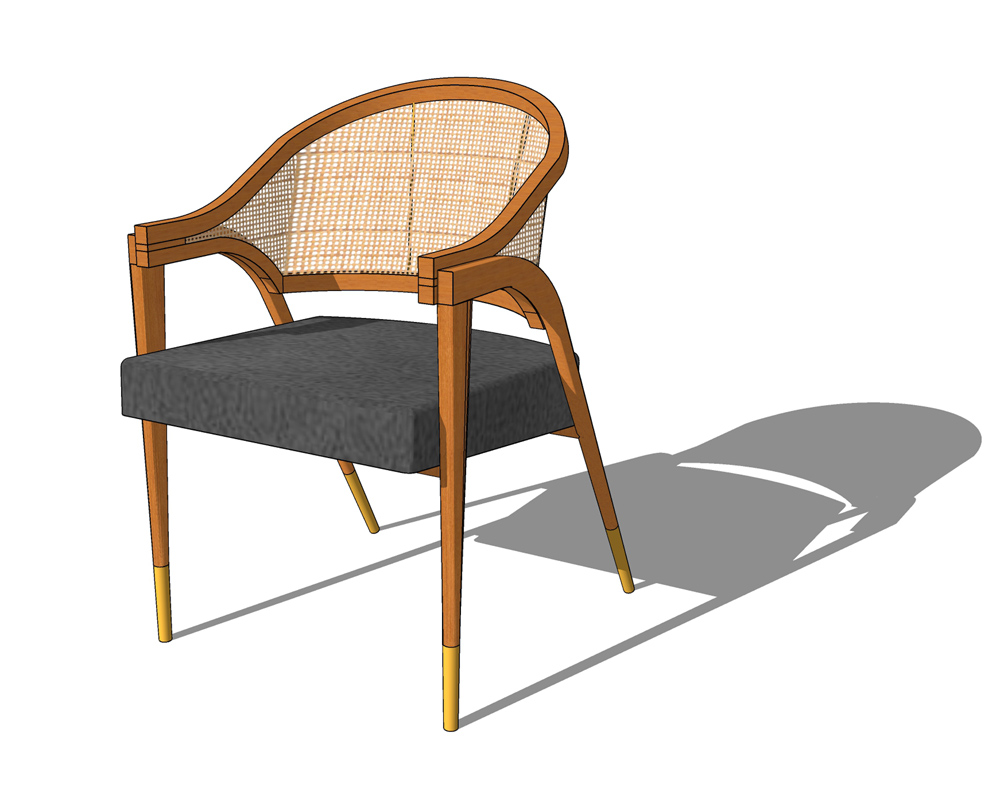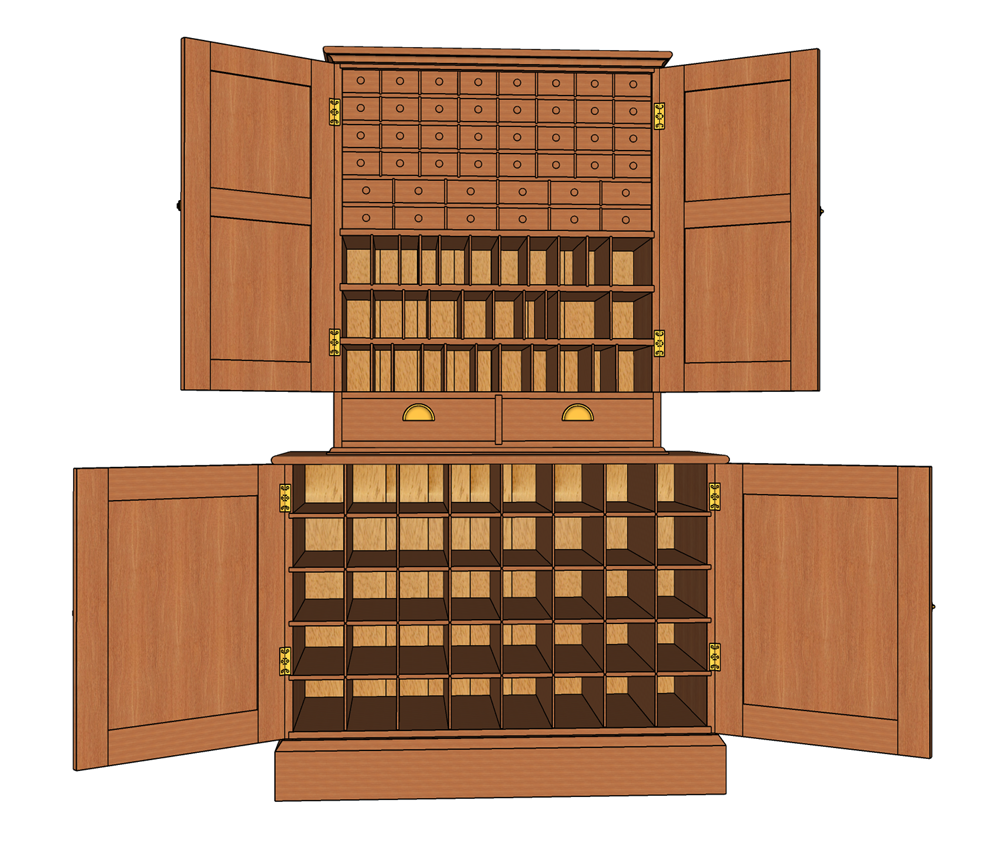Very elegant solution to the problem.Congratulations.
dh
Posts
-
RE: Triangle Peg Puzzle
-
Regency book stand
 Nothing special. It's been a while since there was a new post on the forum. Saw this piece on 1stdibs.com the other day. The original, in mahogany, was made in England in about 1880. The turned bamboo-style legs appealed to me. Got the books from the 3D Warehouse.
Nothing special. It's been a while since there was a new post on the forum. Saw this piece on 1stdibs.com the other day. The original, in mahogany, was made in England in about 1880. The turned bamboo-style legs appealed to me. Got the books from the 3D Warehouse.
Enjoy.
dh -
RE: Lighthearted Scandinavian design
Thanks, as always, Dave. I'm sure the cabinet will also hold mittens, and scarves, and socks. Maybe even neckties, if anyone still wears them.
-
Lighthearted Scandinavian design
Spotted this item on the 1stdibs.com web site today. It's called the Glove cabinet, and the two parts pivot on a central post. The original was designed in 1961 by Finn Juhl, the Dane widely credited with popularizing Scandinavian modern design. It's made of cherry, with steel and brass legs and posts. No idea how the drawers are actually fitted, so I decided that they would slide on angle brackets.
Enjoy.
dh

-
RE: Edward Wormley armchair
Thanks, HornOxx, for your eagle eye. I somehow let the rear leg caps dip a fraction of an inch below the ground plane.
-
Edward Wormley armchair
 A Midcentury Modern chair by Edward Wormley (1907-1995), prolific American furniture designer.This one, from about 1960, is known as the A Frame chair. Dunbar manufactured the original. The model owes its existence to Curviloft, which I used to shape the legs from rectangular to round, and to create the shape for the cane back.
A Midcentury Modern chair by Edward Wormley (1907-1995), prolific American furniture designer.This one, from about 1960, is known as the A Frame chair. Dunbar manufactured the original. The model owes its existence to Curviloft, which I used to shape the legs from rectangular to round, and to create the shape for the cane back.
Enjoy. -
Drilling down
 Saw this amazing cabinet on the 1stdibs.com web site and couldn't resist modeling it with all its hardware and joinery. The original was made in the 1940s for the Cleveland Twist Drill Co. (The company, founded in 1876, is still around, part of Greenfield Industries.) Each of the little drawers has a divider, and the large drawers are divided into 10 compartments. The cubbies in the top cabinet seem to be spaced randomly, but that's what I saw in the original. The original is about 7 feet tall and 4 feet wide at the base.
Saw this amazing cabinet on the 1stdibs.com web site and couldn't resist modeling it with all its hardware and joinery. The original was made in the 1940s for the Cleveland Twist Drill Co. (The company, founded in 1876, is still around, part of Greenfield Industries.) Each of the little drawers has a divider, and the large drawers are divided into 10 compartments. The cubbies in the top cabinet seem to be spaced randomly, but that's what I saw in the original. The original is about 7 feet tall and 4 feet wide at the base.
Enjoy.
Best,
dh -
RE: A pair of originals
Thanks, pbacot. Here's a link to the Etsy listing for the plan, just in case. (And I'm sure my shop is smaller and messier than yours.)
Best,
dh -
A pair of originals
 I wanted to share a couple of original designs I modeled recently.
I wanted to share a couple of original designs I modeled recently.
On the left is a wardrobe with a cupboard for suits and coats (or dresses) and a stack of graduated drawers for, well, underdrawers and socks and stuff. I chose a dark mahogany for the base, crown molding and pulls; cherry for the case; and chestnut with chestnut burl for the drawer boxes and door panels. I put in all the joinery because I get compulsive sometimes. The model seems to be fairly popular on the 3D Warehouse, with nearly 400 views and 60 downloads in two days.
On the right is a work station for a mini-lathe and grinder, reflecting my love for woodturning. Parts for the stand can be cut from a sheet of 3/4-in. plywood and a half-sheet of 1/2-in. ply. It has drawers for chucks, faceplates, grinding-jig parts, and other accessories; holes in the top to hold oft-used tools, knockout bars, and live centers; storage for wood, and a space below the storage to be filled with sand for ballast. I created a full set of plans for the work station--with a cutlist and assembly instructions--that I have for sale on my Etsy shop. So far, though, no takers. Dang.
Enjoy.
dh -
RE: I know of no better place to ask
Dave R's blog on the ascending volute is the one I had in mind.
-
RE: I know of no better place to ask
Several years ago, Dave Richards explained how to model a Greek column capital using (I think) the Curve Maker plugin. It was a post on Fine Woodworking's "Design. Click. Build." blog. That might work if SubD doesn't. I searched the site but couldn't find the post. Maybe Dave can provide a link.
As for researching the history of the chairs, I have three suggestions:
One, the Furniture Study center at the Yale University Art Gallery (https://artgallery.yale.edu/furniture-study). The center specializes in American furniture, but one of the curators may be able to steer you to other resources.Ditto the Henry R. Luce center for American Art at the Metropolitan Museum, in New York City. (metmuseum.org).
Third, call the Furniture Institute of Massachusetts and speak with its founder, Philip C. Lowe. Phil is a master restorer and quite knowledgeable about furniture styles. (http://furnituremakingclasses.com).
Hope this helps.
dh